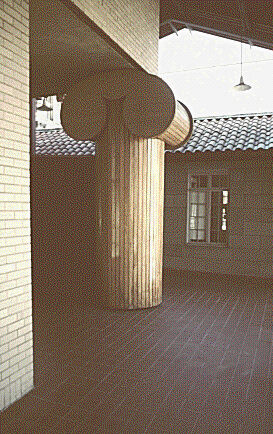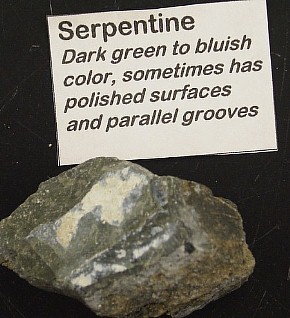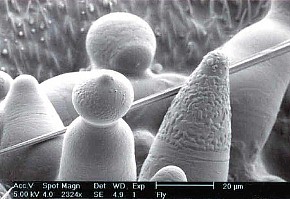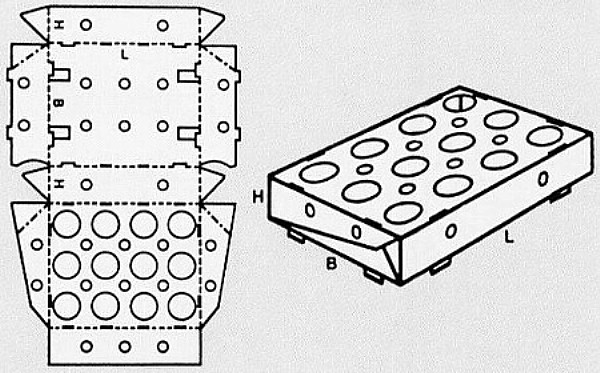2005.10.01 12:29
HATE
Modern art always "projects itself into a twilight zone where no values are fixed, he [Leo Steinberg] said. "It is always born in anxiety." Not only that, he said, it is the function of really valuable new Modern art to "transmit this anxiety to the spectator," so that when he looks at it, he is thrown into "a genuine existential predicament." This is basically Greenberg's line, of course--"all profoundly original art looks ugly at first"--but Steinberg made the feeling seem deeper (and a bit more refined). The clincher was Steinberg's own confession of how he had first disliked [Jasper] Johns's work. He had resisted it. He had fought to cling to his old values--and then realized he was wrong. This filtered down as a kind of Trubulence Theorem. If a work of art or a new style disturbed you, it was probably good work. If you hated it--it was probably great.
--Tom Wolfe, The Painted Word
2005.10.13 13:41
Jimmy Venturi's new website...
Was Complexity and Contradiction in Architecture really "earth shattering?" Did it really change architectural history?
I was only 10 years old when C&C was published so I can't give any personal experience as to what happened then, but a few years ago someone at design-l wrote that "nobody read that precious book back then. Go and read the [bad?] reviews it got." I haven't checked out any of the reviews, but they are certainly a legitimate part of the continuum. C&C was not in the adult section of my local free library in 1972, but it was at the Northeast (Philadelphia) Regional library, and I can still remember seeing it for the first time. It looked "foreign" to me, clinical even, and once I started reading it, it just got worse--first sentence: "This is not an easy book," and that remained true for me in 1972. I bought my own copy of C&C at MoMA in 1975 (now a first year architecture student), and I started reading it again. I mentioned my reading to one of my teachers, Maria Romanach (daughter of Mario Romanach, sometime supplier of Cuban cigars to Mies van der Rohe), and she said, "Yeah, but you don't want to design that way!"
So, how many architects have since Complexity and Contradiction in Architecture designed:
nonstraightforward architecture
ambiguous architecture
complex and contradictory architecture vs. simple and picturesque architecture
"both-and" architecture
double-functioning element architecture
contradiction adapted architecture
contradiction juxtaposed architecture
different outside and inside architecture
difficult whole architecture
?
Are any of the above "architectures" really discussed when Post-Modern Architecture is discussed?
Charles Jencks published The Language of Post-Modern Architecture in 1977.
October 1977, the cover of Progressive Architecture looked almost exactly like this:

and the copy-cats were now uncontrollably out of the bag. I remember professors in school being literally afraid that students would start doing the same thing.
| |
2005.11.16 10:32
Las Vegas: An Unconventional History
The first 90 minutes are very worthwhile in that how Las Vegas started and continued to happen (against the odds) is presented clearly and engagingly. I never really knew how Las Vegas was like the exact opposite of all other American cities in that what was illegal everywhere else (including citizens) were, like magic almost, legal in Las Vegas. It's like "who was kidding who?" As if all other American cities were bastions of morality, even.
Las Vegas as capital of Native America?
2005.11.22 10:18
Your Ignorance is Inexcusable
"It is no accident that the New in the arts always announces itself in the guise of a revival, Hadid's career starts with the reinterpretation of Malevich's Teltonik, and her early work has indeed been (mis-)understood as neo-Constructivism. In a similar fashion, Peter Eisenman is said to take off from early Le Corbusier and Terragni. Revivalist appropriation is the easiest and most immediate option to articulate dissatisfaction and resistance towards a dominant practice. However, this has nothing to do with repetition. For instance, to pick up the unfinished projects of modernism on the back of postmodernism cannot be simple re-enactment, even if one initially works with direct citations."
--Patrik Schumacher, "Mechanism of Radical Innovation" in Zaha Hadid Complete Works: Texts and References. p. 65.
Is there even such a thing as simple reenactment?
2005.11.22 11:50
Your Ignorance is Inexcusable
pastiche 1 : a dramatic, literary, or musical piece openly imitating the previous works of other artists, often with satirical intent 2 : a pasticcio of incongruous parts; a hodgepodge
Reenactment and pastiche are not the same thing.
Reenactment, as a historiographic methodology, involves an imitation of the source event in order to better understand the source event and then learn from there. Reenactment as a design methodology works the same way.
Disney-fication is pastiche 1 without the satire.
Contemporary avant garde architecture in virtually any established setting unwittingly generates pastiche 2.
2005.12.02 11:35
Consumerism and Monumentality
I agree that there is a kind of hegemony operating within architecture today (and definitely since the Modern Movement/International Style), but architecture wasn't always that way. Most of architectures' histories are like languages' histories in that they were all tied/related to specific places on the planet and reflected the culture of those places.
Reflecting on what presently constitutes architectural "history," perhaps architecture is now a world trade commodity more than anything else.
Is the next big thing to mix up the fashion brands? Wear your Foster pants with Woods belt over Eisenman panties?
| |
2005.12.05 16:00
Thom Mayne on Charlie Rose
First of all, presenting a sound-bite answer is not the issue here, especially since Rose gave Mayne a whole hour. Rose's question contained some leads, "is it politics?, is it style?" (I don't remember all the exact words), and given the question, I would have given the context of where I see Morphosis within architectural history, and then explained what the Morphosis design approach sets out to accomplish. I can't answer what Mayne would say himself, but that's the way I would have approached an answer to the question. What I thought after I saw Mayne's hesitation and then heard his answer is just how afraid and subsequently unable architects are at talking about style. But, more to the point, architects are afraid to discuss their motivation because a lot of the motivation (especially for Morphosis) is about creating a certain style.
style 1 : the way in which something is said, done, expressed, or performed
The notion of style in architecture has been so debased by Modernism's reaction to eclecticism that architects now don't even know how to talk about it.
2005.12.08 12:03
serpentOMA's pavillion

context: no contest
2005.12.08 12:32
serpentOMA's pavillion

sole solution
OR

not original enough
| |
2005.12.08 14:37
serpentOMA's pavillion
 
contentious
2005.12.09 16:13
Check this firm out
Schachtel Architektur

|